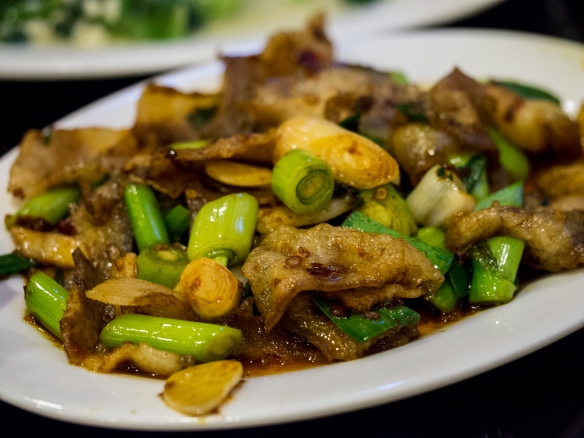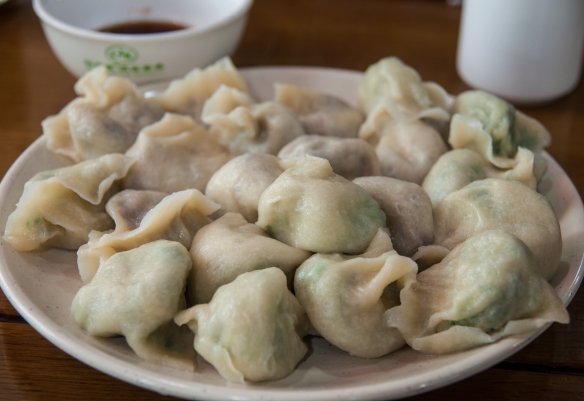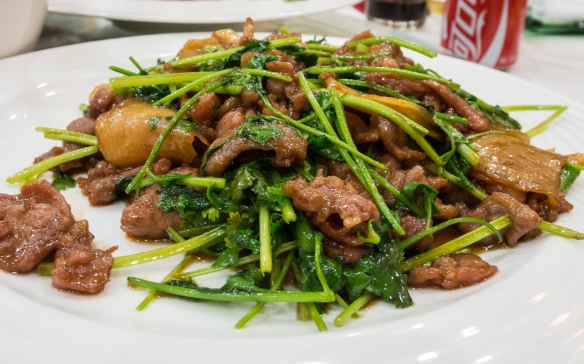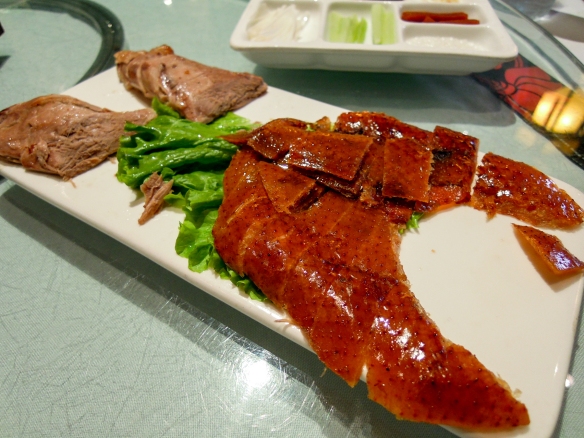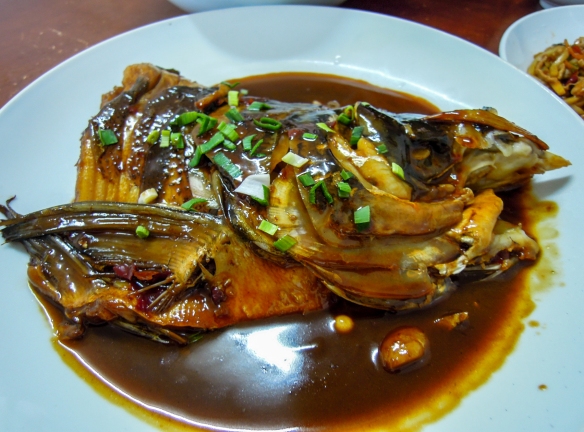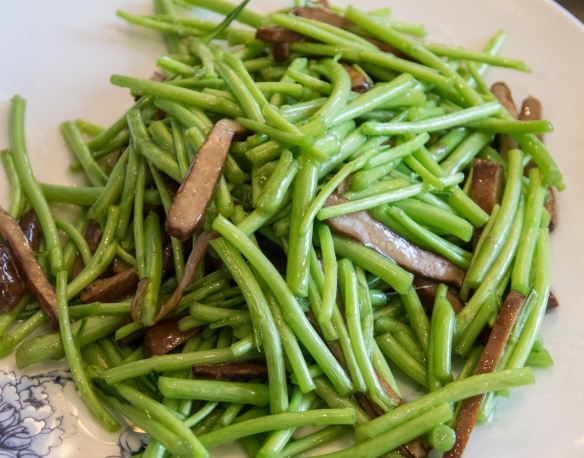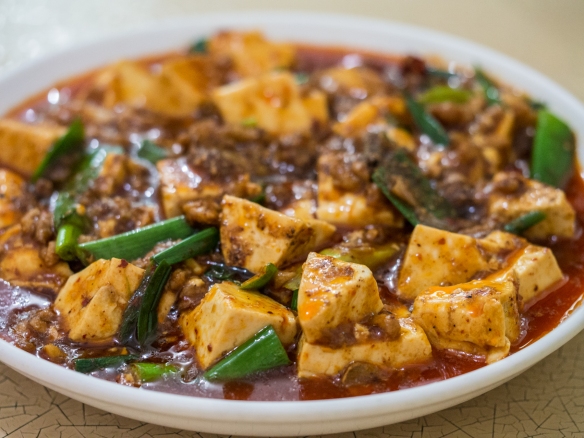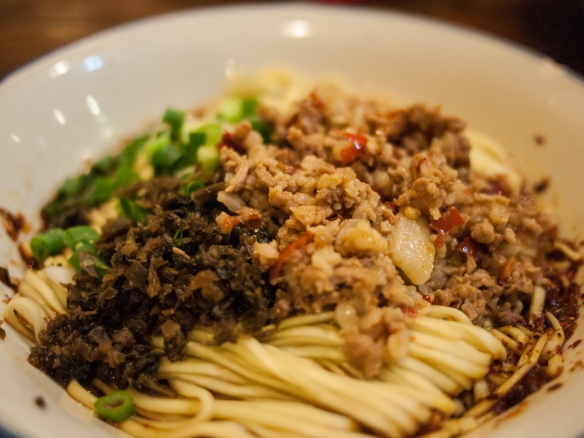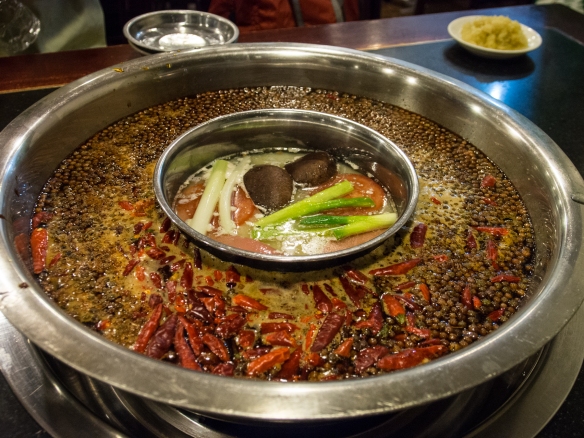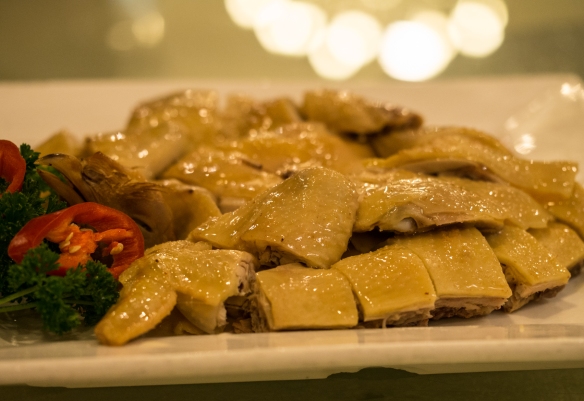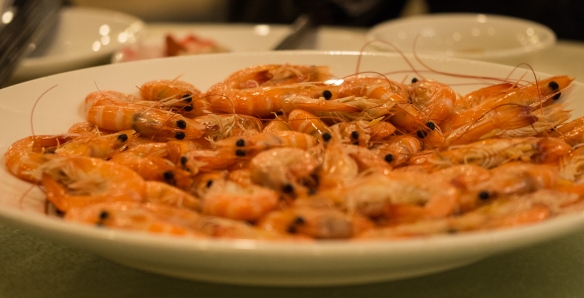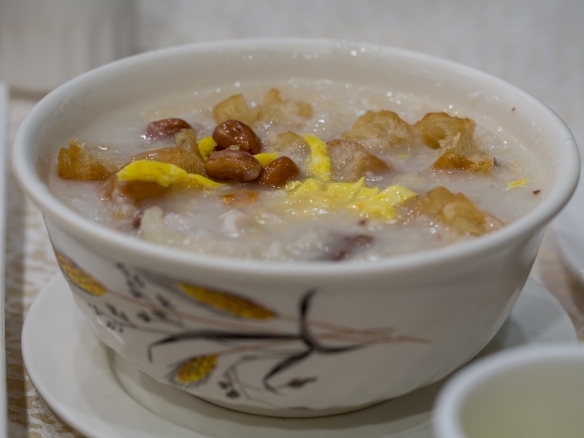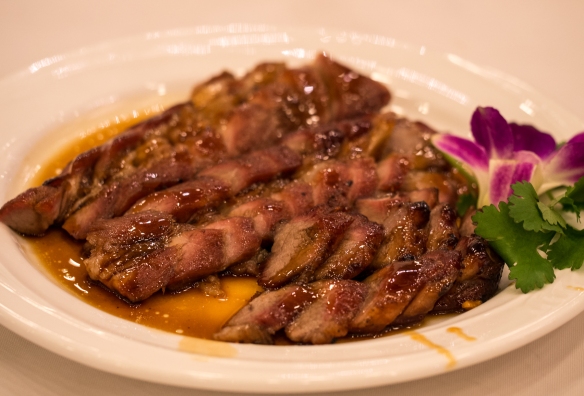This saying, 民以食為天 mín yǐ shí wéi tiān, is a good indication that the Chinese are pretty serious about food and eating. I have written previously on this blog about food terminology in the Chinese language. Suffice it to say, the Chinese love to eat, and when they are not eating, they are talking about eating, or planning what to eat next. China is truly one of the great cuisines of the world, and one of the ancient cuisines that has been around for a very long time. In fact, during the Song Dynasty (960-1279 A.D.) one could find more than 200 dishes served at a banquet, including 41 dishes of fish, shrimp, snails, pork, goose, duck mutton, pideon, etc., 42 dishes of fruits and sweetmeats, 20 dishes of vegetables, 9 of boiled rice, 29 dishes of dried fish, 17 different drinks, 19 kinds of pies, and 57 desserts. In the capitol city of of Hangzhou you could find 18 different kinds of beans and soya beans, 9 kinds of rice, 11 kinds of apricots, 8 of pears, and so on. (See Gernet, Jacques. Daily Life in China on the Eve of the Mongol Invasion, 1250-1276). Think about what was going on in Europe during this time.
In China’s ancient book of poetry, The Book of Songs (shī jīng 詩經), published around the 5th century B.C., there are 130 references to plants, 200 to animals, 19 fishes, 38 types of poultry, the seasonings mentioned include salt, honey, malt sugar, ginger, cinnamon, and pepper. By contrast, the Bible only mentions 29 food items.
There are at least three reasons we can contribute to China’s long obsession with food. One, there has been a very long, sustained civilization. In other words, there has been a long time to develop the many food sources. Two, geographical diversity. China is a land of many geographical features, from desert to jungle to fertile river plains. And three, for much of China’s history the people have been threatened with famine. This has resulted in the Chinese being very creative with all food sources.
三大菜系 sān dà cài xì: Three General Food Categories
The first and biggest category is Han/Man 汉/满 which refers to the Han or Chinese majority and Manchurian (the rulers of the last imperial dynasty. This accounts for the vast majority of all Chinese food in China.
The second category is Muslim or kosher cuisine, referred to in Chinese as 清真, and the third category is vegetarianism 素 which is often associated with Buddhism.
八大菜系 bā dà cài xì: The Eight Culinary Tradtions
Chinese food, represented under the broad Han/Man category is often broken down into eight distinct culinary categories, which are generally divided by geographical region.
1. Chuān 川 Sichuan
2. Huì 徽 Anhui
3. Lǔ 鲁 Shandong
4. Mín 闽 Fujian
5. Sū 苏 Jiangsu
6. Yuè 粤 Guangdong, Hong Kong
7.Xiāng 湘 Hunan
8. Zhè 浙 Zhejiang
四大菜系 sì dà cài xì: The Four Major Culinary Traditions
This list can be further simplified into four main geographical areas that incorporate the eight ares listed above. They are:
Lǔ 鲁 Northern China
Huáiyáng 淮扬 Eastern China
(Lower Yangtze River Basin, incl. Jiangsu, Zhejiang, Anhui)
Chuān 川 Western China (Sichuan, Chongqing, Guizhou, Yunnan)
Yuè 粤 Guangdong, Hong Kong
Northern Cuisine 鲁菜 lǔ cài (Shandong Cuisine)
• Wheat-based foods: noodles, steamed buns, fried flat breads
• Seasonings: garlic, chives, leeks, star anise, sweet plum sauces
• Poultry , especially duck, lamb, beef, pork
Eastern Cuisine 淮扬菜 huáiyáng cài (Jiangsu Cuisine)
• Land of fish and rice
• Light flavors that emphasize the natural flavor of the food; not too salty or sweet
• Famous for soy sauces, vinegars, and rice wines
• Stir-frying and steaming most common
Western Cuisine 川菜 chuān cài (Sichuan Cuisine)
• Land of abundance
• Liberal use of spice (chili peppers, Sichuan peppercorns)
• Lots of garlic, ginger, bamboo shoots, mushrooms, pork, chicken
Southern Cuisine 粤菜 yuè cài (Guangdong/Cantonese Cuisine)
• China’s haute cuisine
• Tastes and techniques a blend of China and the West
• Light flavors; delicate, fresh, tender, crisp
• Known for roasted meats: suckling pig, duck, chicken, BBQ pork


